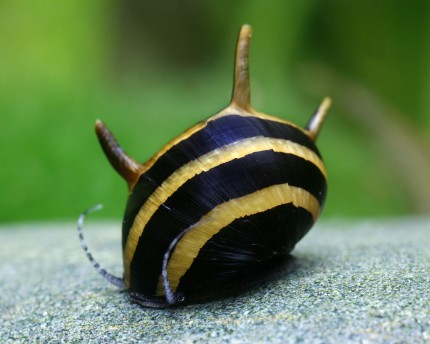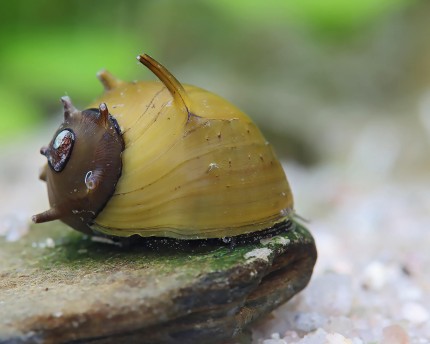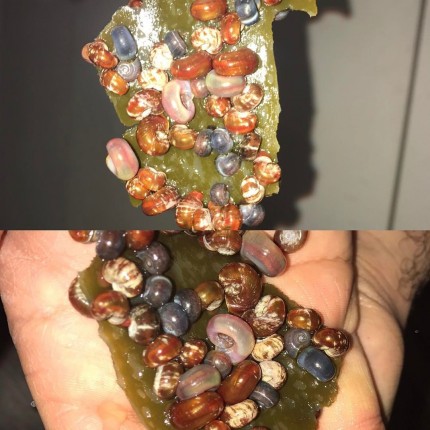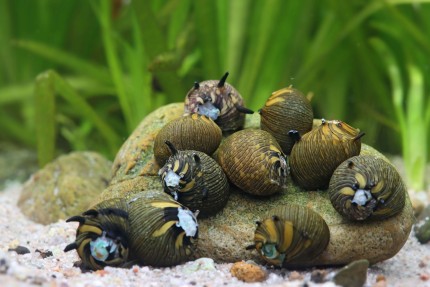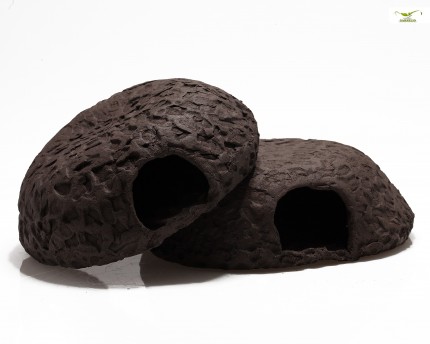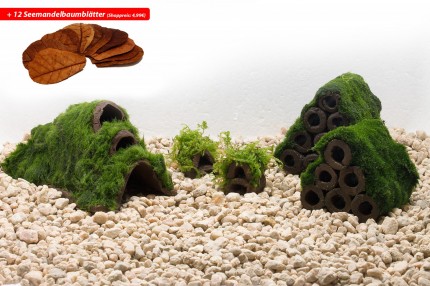Racing snails, staghorn snails & Co. in the aquarium
The snails of the family Neritidae are practically universally considered to be very good algae eaters, and they are extremely popular in aquaristics. Their home is predominantly in Southeast Asia, where they live in rivers and streams near the sea. They predominantly inhabit freshwater areas, but neritids can also be found in the brackish water zone in estuaries.
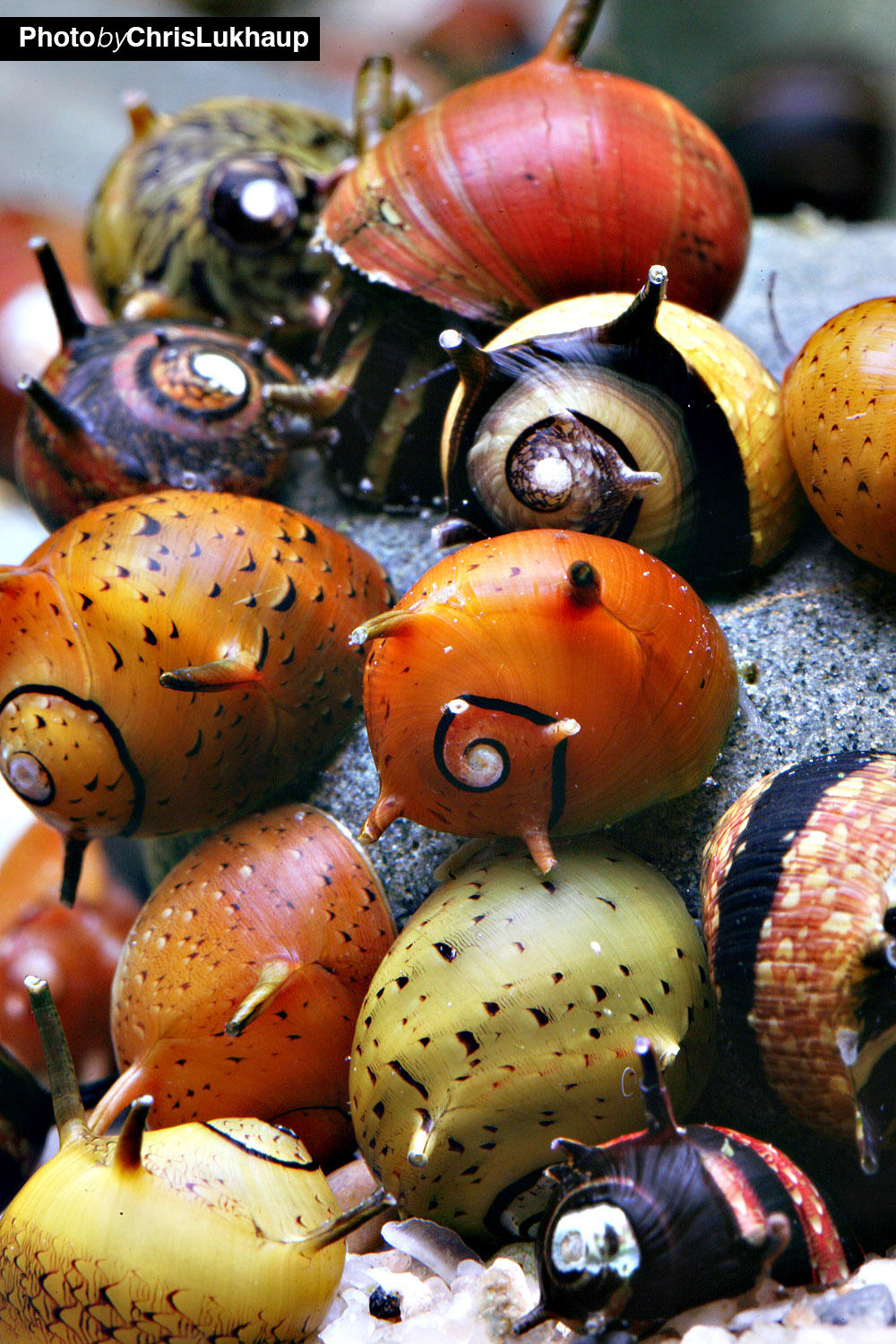
Mermaid snails in the aquarium
There are species like Neritina waigiensis, which do not live exclusively in water - if you want to keep them in an aquarium, you have to take care of a dense cover! Other species like Clithon diadema and Clithon corona, but also Vittina coromandeliana or Neritina pulligera never leave the water and are also suitable for open aquariums.
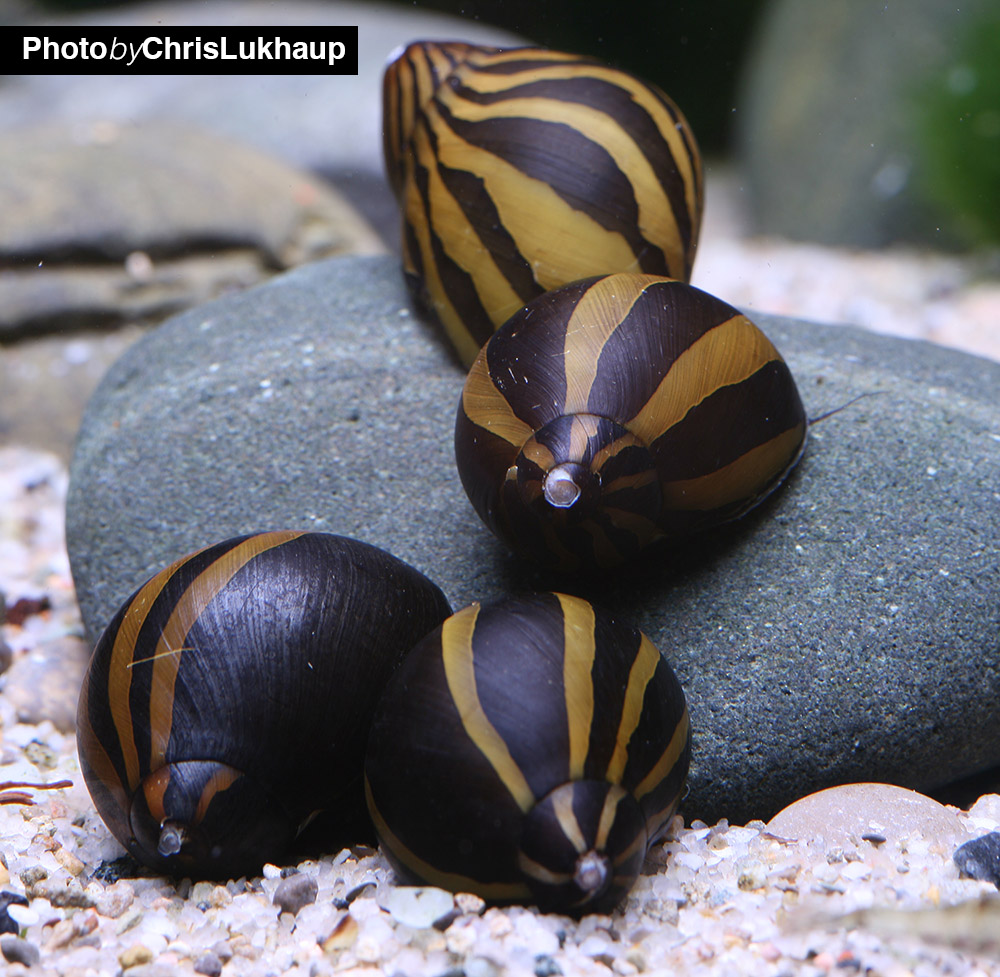
Water parameters for racing snails & Co.
Racing snails get along in a wide spectrum of different water values. Only the aquarium should not be too cold for tropical and subtropical species - below 20 °C water temperature most Neritidae do not like.
Not only their almost insatiable hunger for algae coverings and biofilms makes the racing snails popular, but also their unusual shell shapes from roundish to shell-shaped, their interesting drawing patterns, their unusual colors and color combinations and the fact that the vast majority of species cannot reproduce in freshwater.
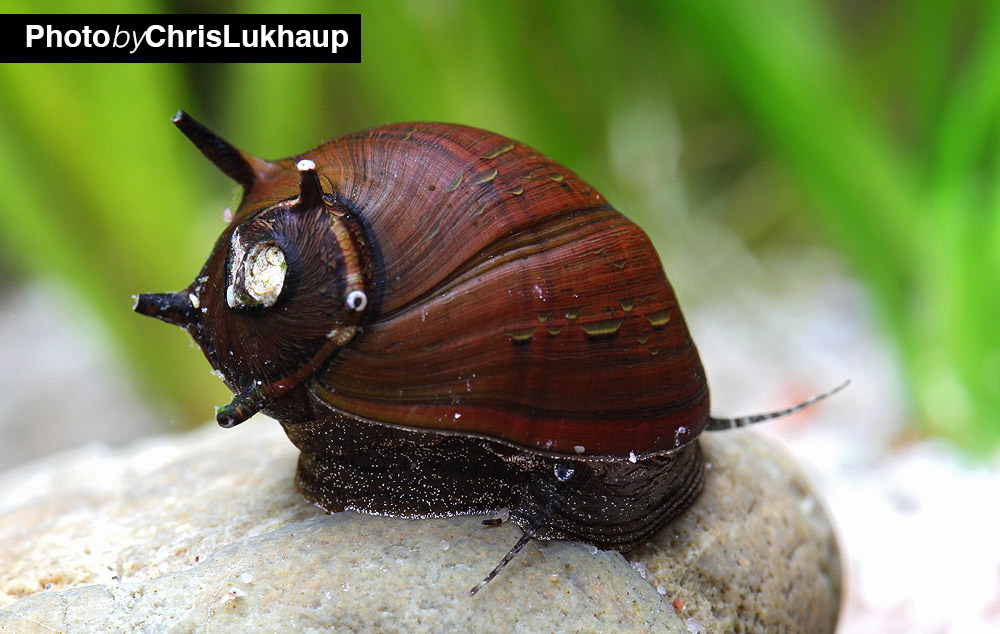 New in the Garnelio: Black staghorn snails
New in the Garnelio: Black staghorn snails
Reproduction of the neritids
This advantage is at the same time their biggest disadvantage - with the exception of the native in European rivers barge snails, racing snails or mermaid snails (as the neritids are also called) can not be reproduced in fresh water. The bisexual snails do mate, and the fertilized females lay their egg cocoons on all kinds of hard substrates. From each of these egg cocoons hatch many tiny, only about 0.1 mm long so-called veliger larvae. These larvae already have the beginnings of a shell and even a small lid, but they float freely in the water. In nature, the tiny creatures are washed by the current into the brackish estuaries and from there further into the sea. There they develop into snails and then migrate back into the rivers. This method of reproduction also explains the extremely large distribution areas of mermaid snails in nature. They distribute themselves over wide areas via the sea.
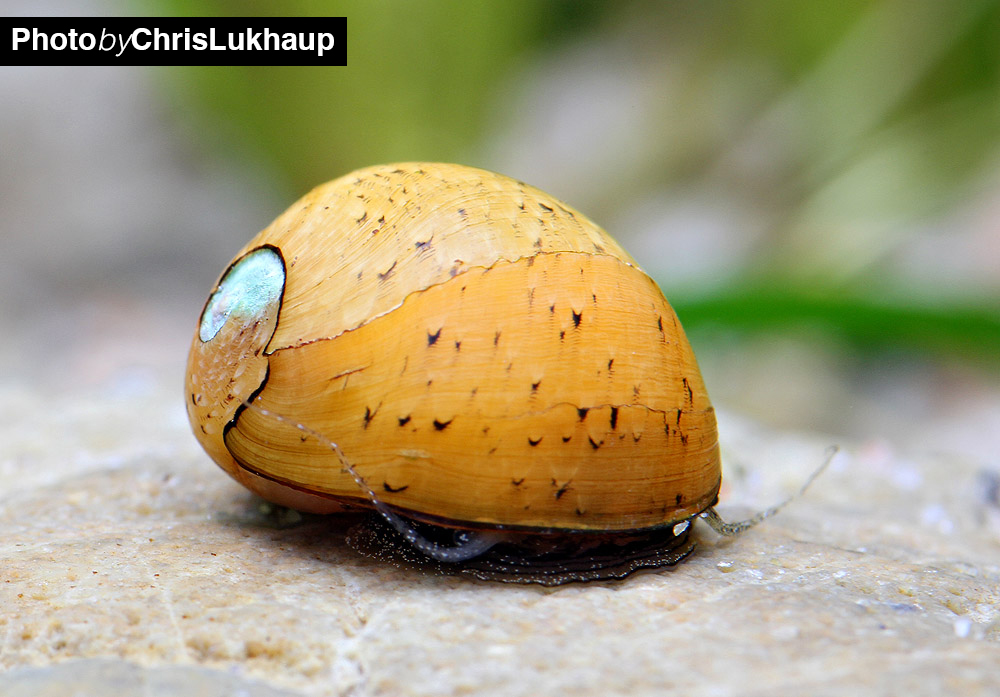
In the laboratory, it has already been possible to keep Veliger larvae of snails of the genus Neritina alive for several weeks, but the transformation into a snail did not occur. It is assumed that these larvae need the smallest plankton, and that they need a certain trigger stimulus such as a certain salinity or special food for the transformation to a snail. Unfortunately, what that is is not yet known. Reports about offspring in the aquarium are therefore to be taken with the utmost caution, mostly another snail species is behind it, which looks quite similar to the mermaid snails at first sight - the fragile cap snail Ferrissia fragilis.
Nevertheless, the egg cocoons "decorate" roots, stones, the glass and other hard substrates in the aquarium. You can remove them with a wire brush or just let time work for you - they dissolve very slowly in the water and eventually disappear.
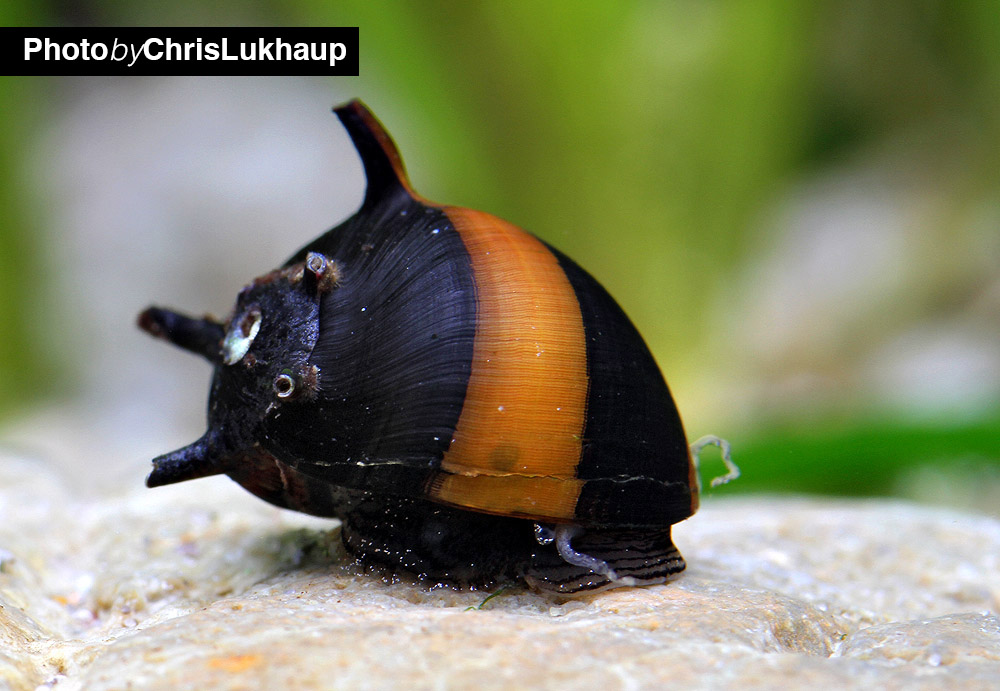
Proper feeding of racing snails & staghorn snails
The special reproduction strategy of most neritid snails and the fact that the animals cannot be bred also explains why animals of the genera Neritina, Neritodryas, Septaria, Vittina and Clithon (to name only the most common ones) are without exception wild-caught. This must be known in order to give new racing snails proper treatment. Often the transport is quite stressful for the animals. As specialized growth eaters all species do not go at the beginning and some species never go to commercial flake food or also to vegetables, which makes them gnaw on the hunger cloth in the hygienically clean aquariums in the wholesale and often also in the trade for a relatively long time. In the Garnelio system there is in every snail aquarium at least one Algaeplate which solves the problem wonderfully, if it is eaten it is replaced by a new algae leaf. The leaves easily last 2 weeks and are wonderfully accepted by every snail species, no matter how specialized it is! We are totally thrilled to have found a continuous 24h food source, which pollutes the water almost not at all. Also shrimp and crayfish are toal on the Algaeplates!
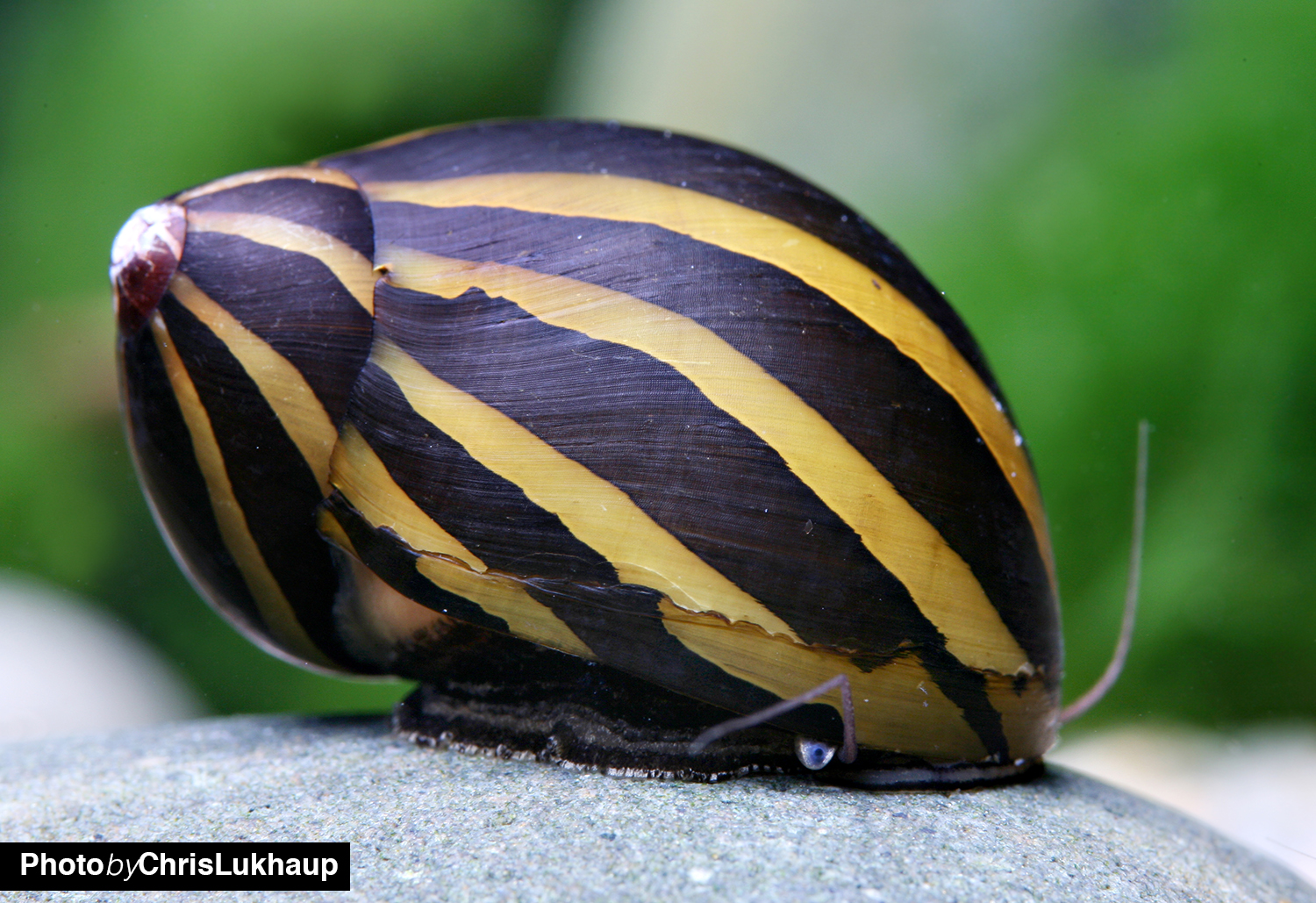
A lack of food can be recognized by the fact that the foot is wavy and looks like it has shrunk. It looks much too small for the shell. Such a snail is very weak and sometimes it can't hold on to the aquarium glass or it can't turn around once it has fallen on the shell. Normally this is not easy for mermaid snails anyway, because they have a very short foot, but for a healthy, strong animal turning around is not a big problem. If the animals are weakened, they often do not manage this effort and die miserably.
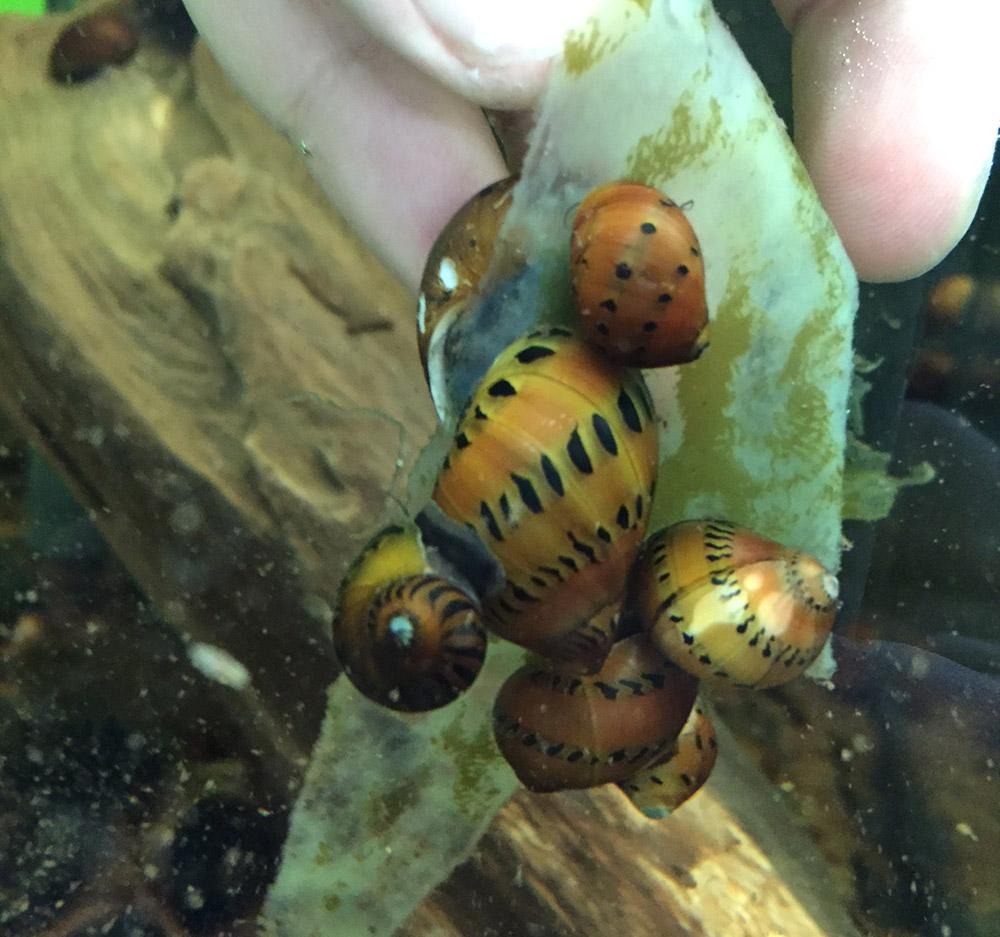
Newly purchased racing snails should be fed first. The snails should be placed directly on a Algaeplate aquariums with algae-covered panes are optimal! Freshly set up aquariums are not suitable for keeping these snails, which are quite sensitive in the beginning, as biofilms and algae have not yet been able to develop sufficiently in them. If the aquarium is too clean or the snail is in a less good condition, we recommend to use Algaeplate or the specially adapted to the needs of these aufwuchs feeding snails Natureholic snail feed. It is optimal for feeding and is applied to stones where the snail can eat as it is used to from its natural habitats. The use of brown autumn leaves is also recommended!
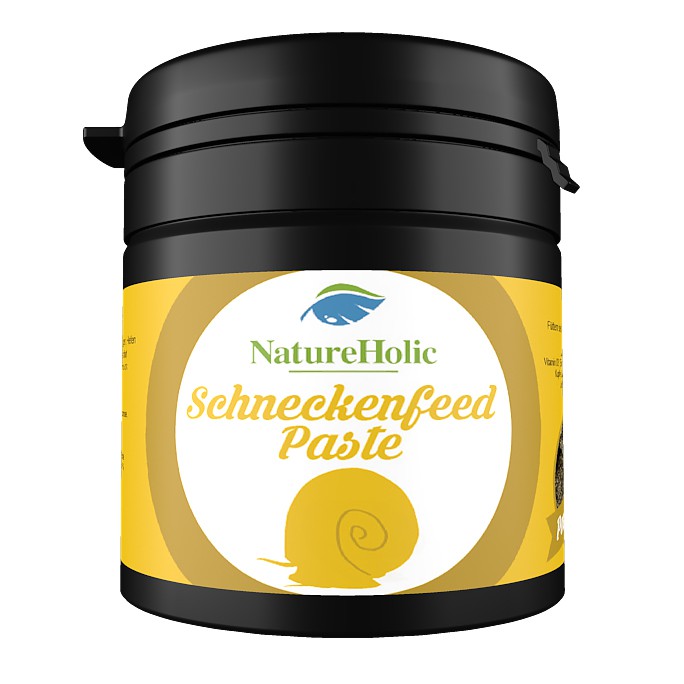
Once the acclimation phase is over and the snail has been able to build up substance again, it is extremely robust, lively in the aquarium and long-lived. There have been isolated reports of neritids that have been kept in the aquarium for 8 years or more.

